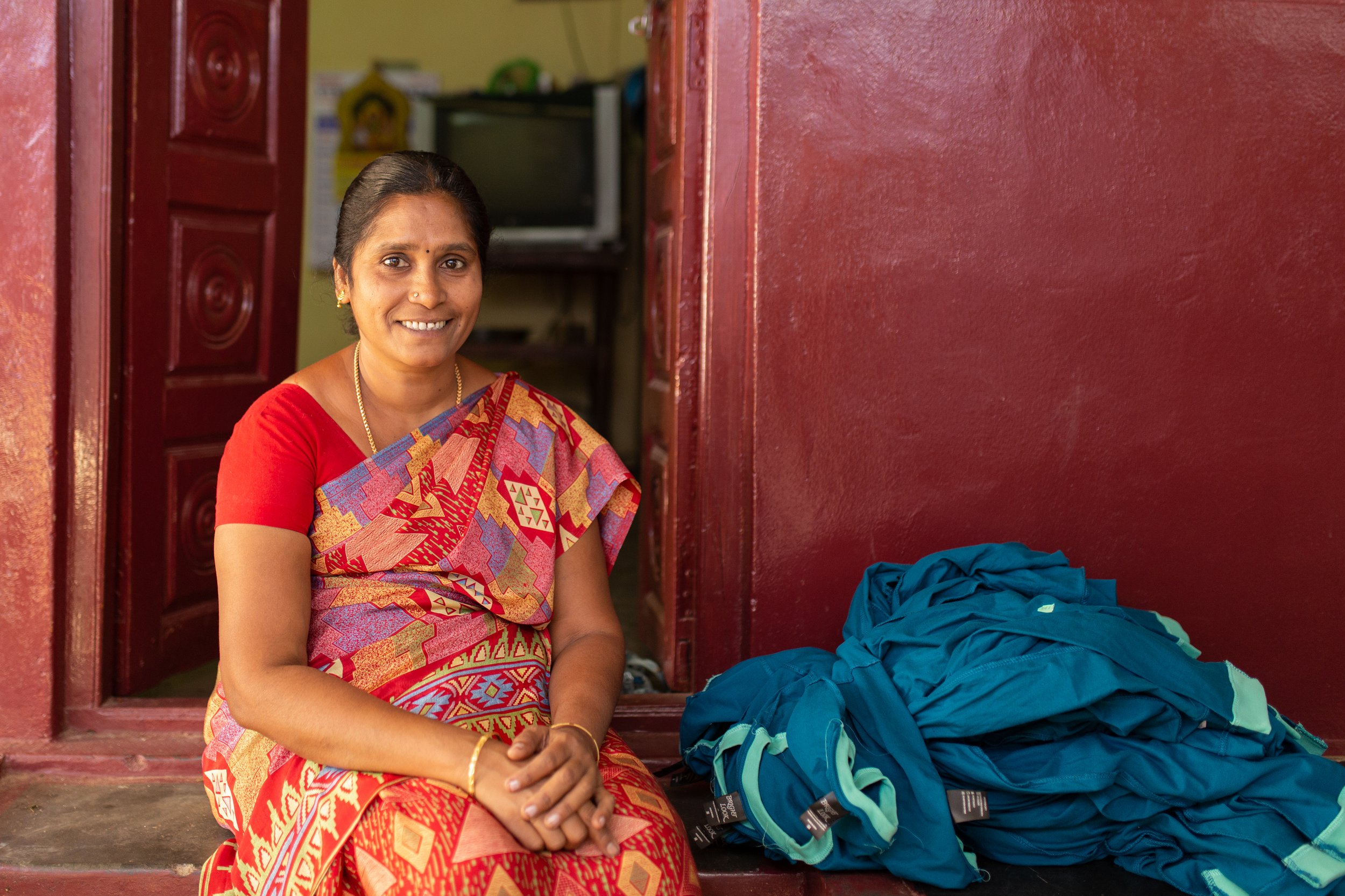
R. Kalavani
Scroll down to view her photography
“Some people were cooperative and happy to have their picture taken, but sometimes when we asked permission many said no. I was happy to learn about the process of taking photos – learning about photography. Once you take the photos, people want to see them – to interact and talk about their pictures."
R Kalavani

"For me, this photo shows the conditions that we work in. Whilst doing this, a lot of dust comes out of the garments, but we don’t have masks. Each mask costs five rupees, but they are not provided. We end up swallowing the dust. It shows the dully lit area in which we work. It strains our eyes, but to get the flow of wind we sit next to the door where it is darker."
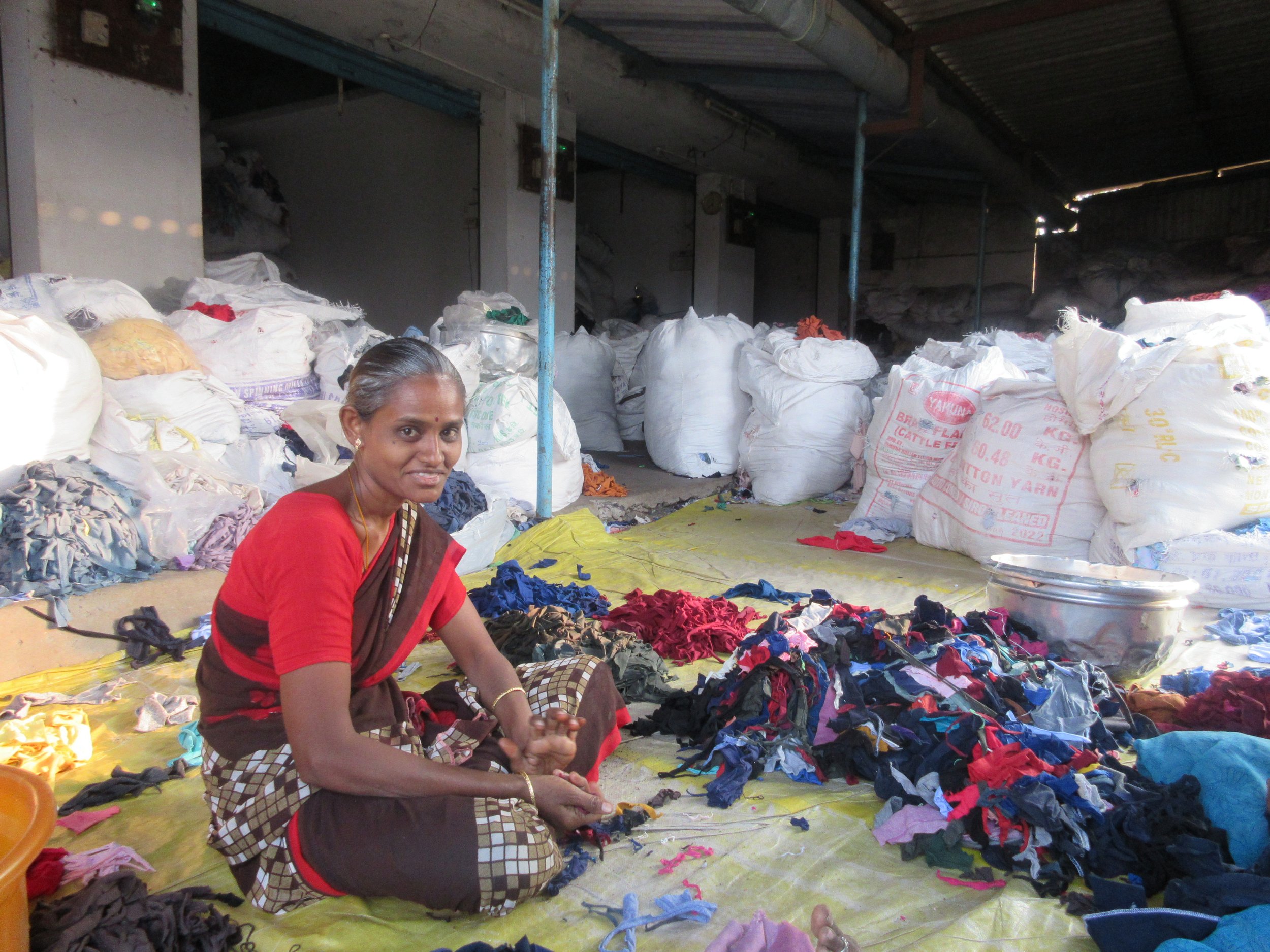
"We have to segregate these waste fabric products by colour. They go for the automobile industry as rags. Sitting on the tarpaulin is hot and uncomfortable, and gives me back pain. We use a tool which is sharp and pricks the fingers, so wrap our hands in cloth to protect them. In the older people, you can see the damage that the constant pricking of the needle has caused to their fingers.”

“These are cotton bales, made by the machines. After they are made, then it comes for cutting and stitching – that’s where the waste is produced, and we work to segregate it. Once the cutting and stitching is done, it goes to the factories which dye fabrics – it’s export quality, so I don’t know what happens to it afterwards.”
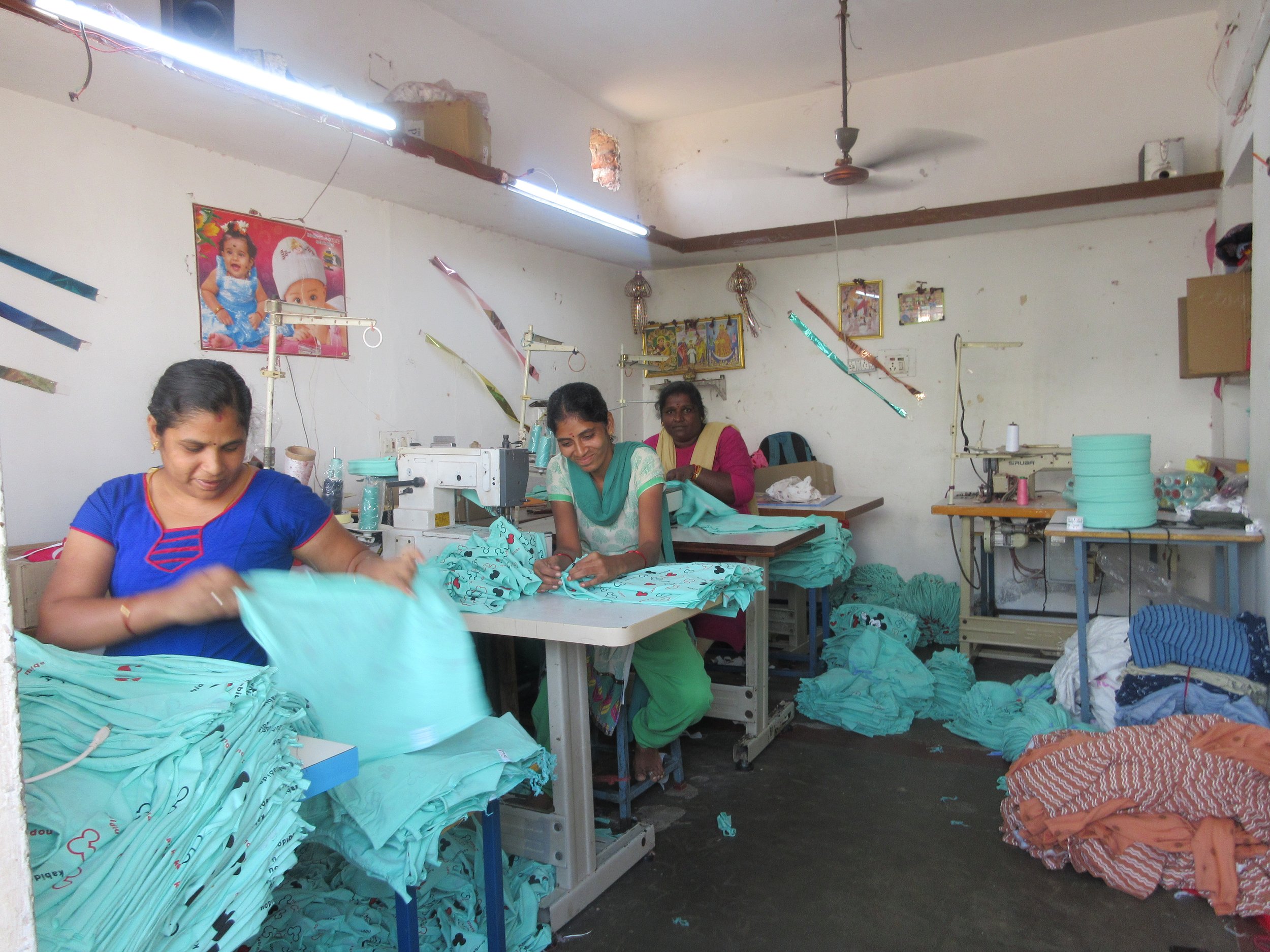
“There are four processes in stitching– attaching sleeves is one of them, which is what she’s doing here. It’s more regular work than piece working. Four people sit in a row, and the garment is passed between them for each step. This is a very small company, run by a husband and wife from their house – sometimes they work in the house, sometimes in a rented space nearby. They employ one or two women to help. After this process, the garments go to workers like me to be finished.”
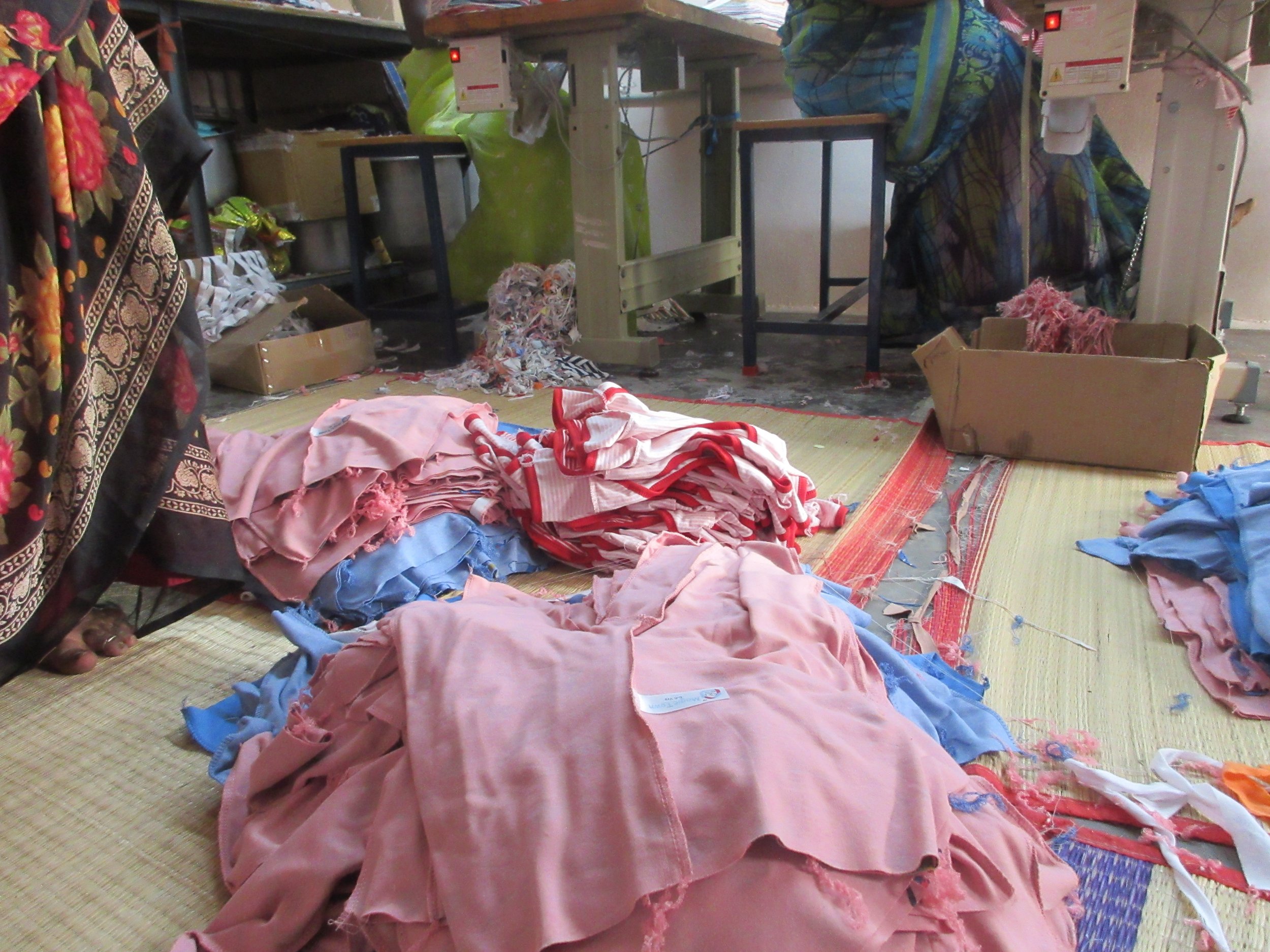
“So, this quantity of shirts is small, so we will complete these here, next to the machines. Machine work is also homebased work – tailors fall under the homeworker category. We work as a group, The room is right next to the house – my home is just behind. Many houses have three rooms – two for living and one for working. In home-based garment work there is stitching, trimming, cutting and embroidery and finishing – these are all paid at different rates depending on the complexity of the job.”
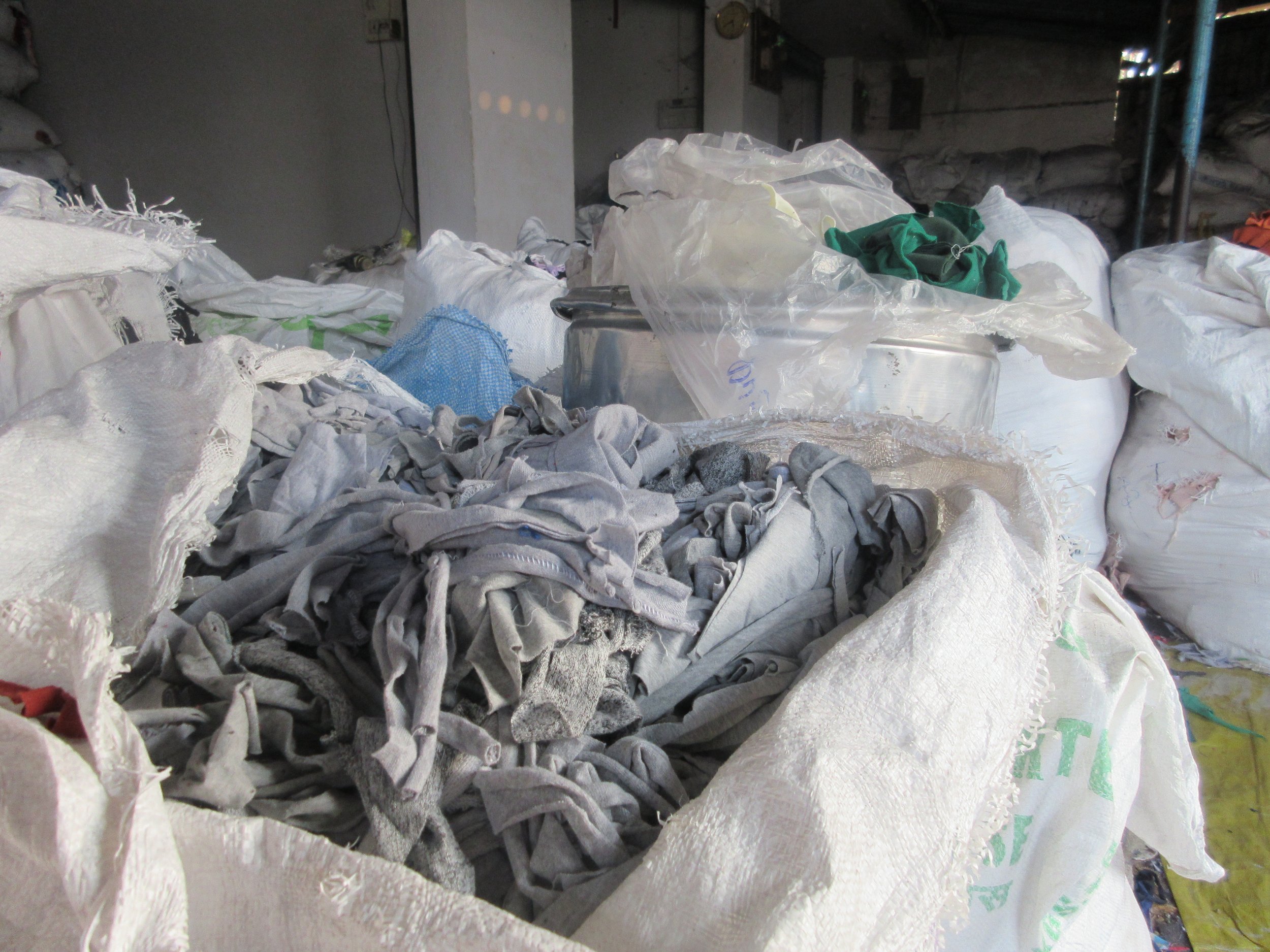
“Each waste type has different pricing. Coloured waste is worth difference amounts to other waste. Even in the waste there is big and small – it’s easier to sort the big waste pieces, but the smaller ones are time consuming. Years back, just by doing this waste segregation, I’ve been able to provide food for my children. The other work was very low pay, and only by sorting waste have I been able to feed and take care of my children.”
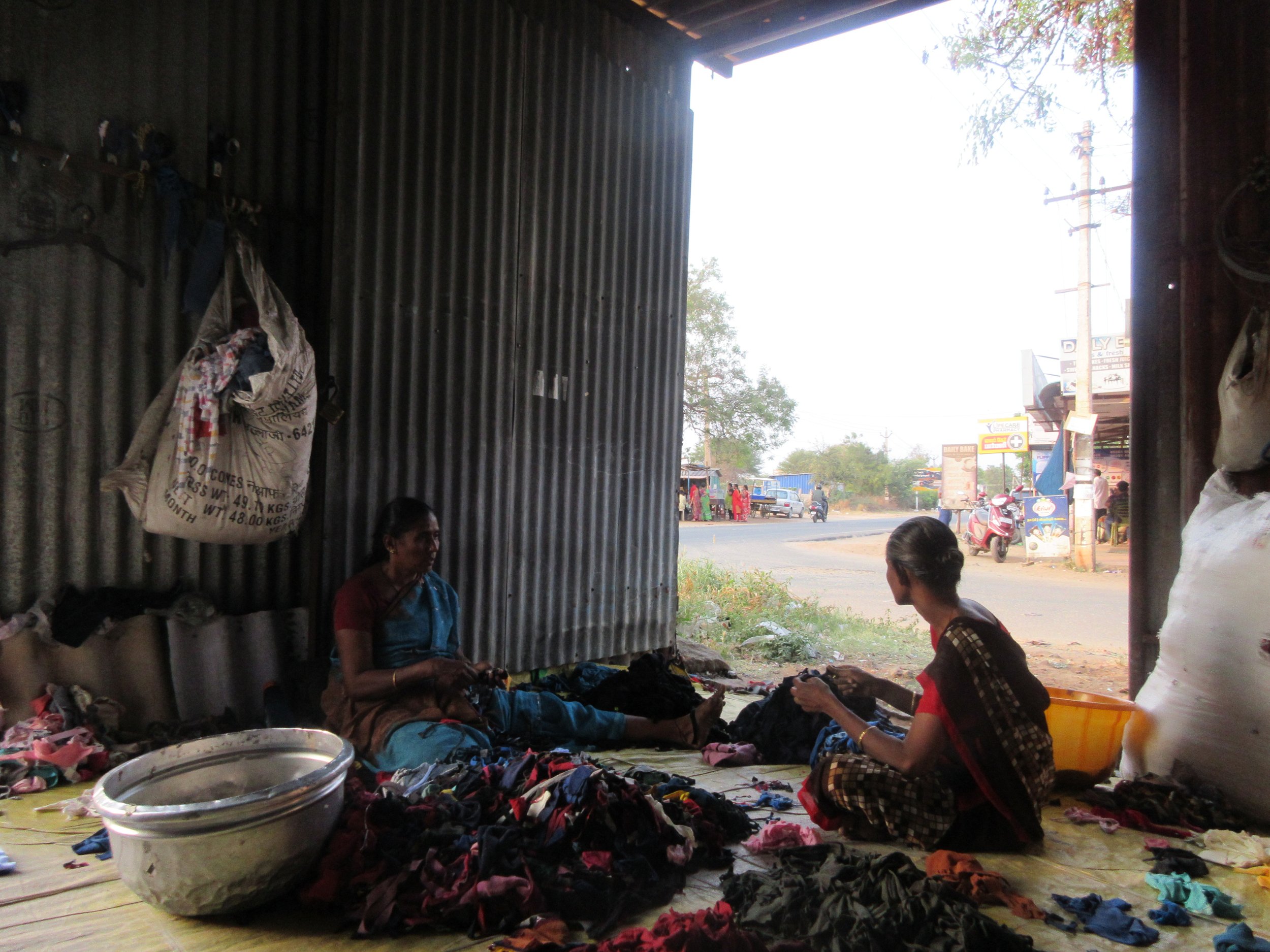
“This is a tin shed – it generates a lot of heat, so to get the breeze we sit next to the door. When two of us work together, we share our joys and our sorrow. If we work alone, it’s not peaceful. What happens with waste segregation is, the owner of the shed goes to the factories and buy the waste in bulk, and then we are paid together to sort it. We do this work when we don’t have other work with garments.’

“We don’t get this kind of work (sorting waste) often – it’s more likely to be trimming. We have to lift the sacks and carry themselves, which means we swallow a lot of fine dust from the rags. The work has to take place where the sacks are, which means more dust.”
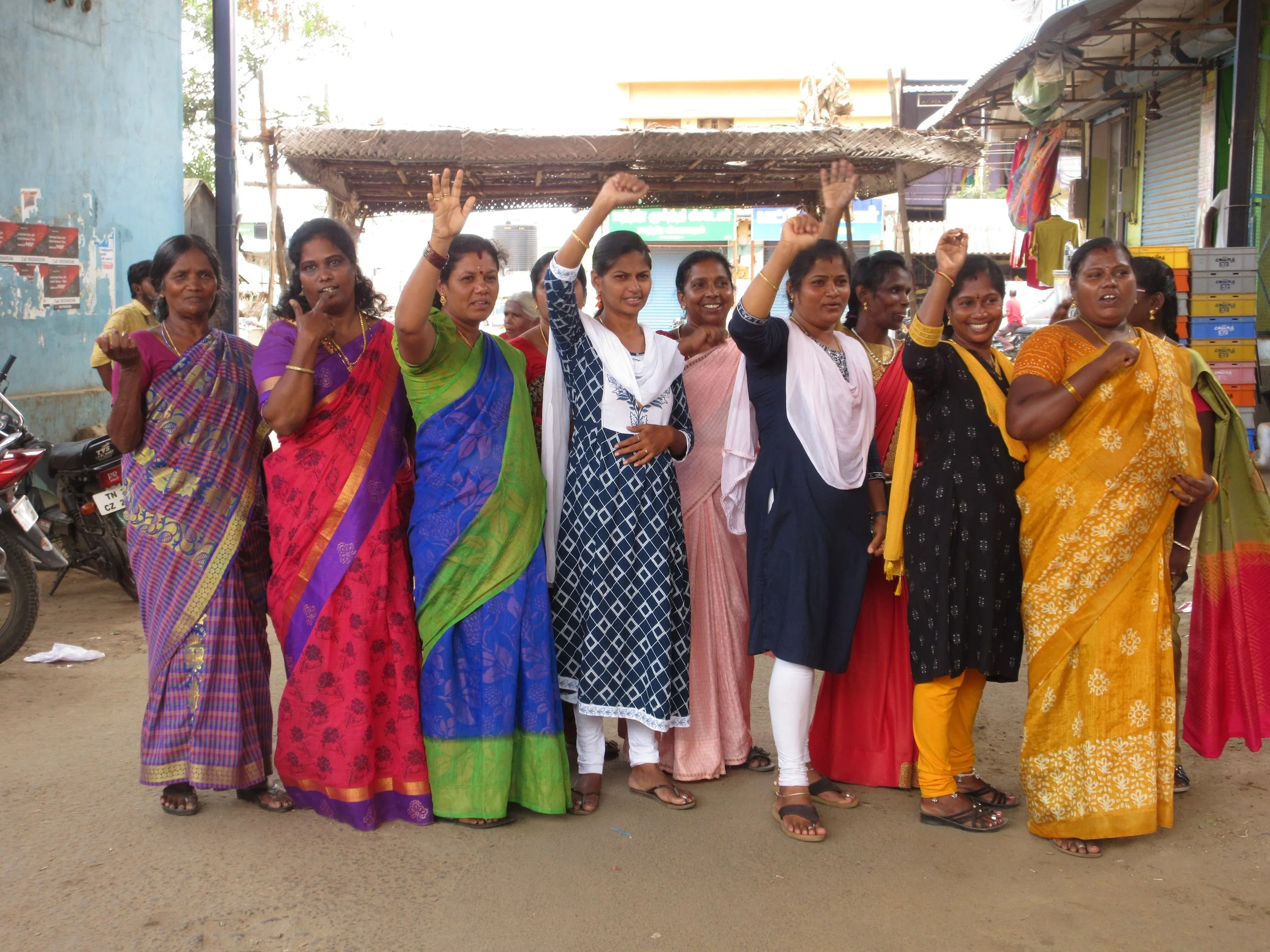
"This photo was shot on May 1st :labour Day. "We women from ANUKATHAM did a road show in Pandian Nagar, Tirupur demanding the rights for home based workers. It is not even a demand, fair wages, regular work, proper shift timings are the rights of every worker which we have been denied for ages now! Hopefully, we get what we deserve in the coming days."

“This is my favourite photo – it’s of my bag. I liked the way it looked on the piles of rags. If I leave it down it will get mixed with the work I’m doing, so I put it in a safe place.”
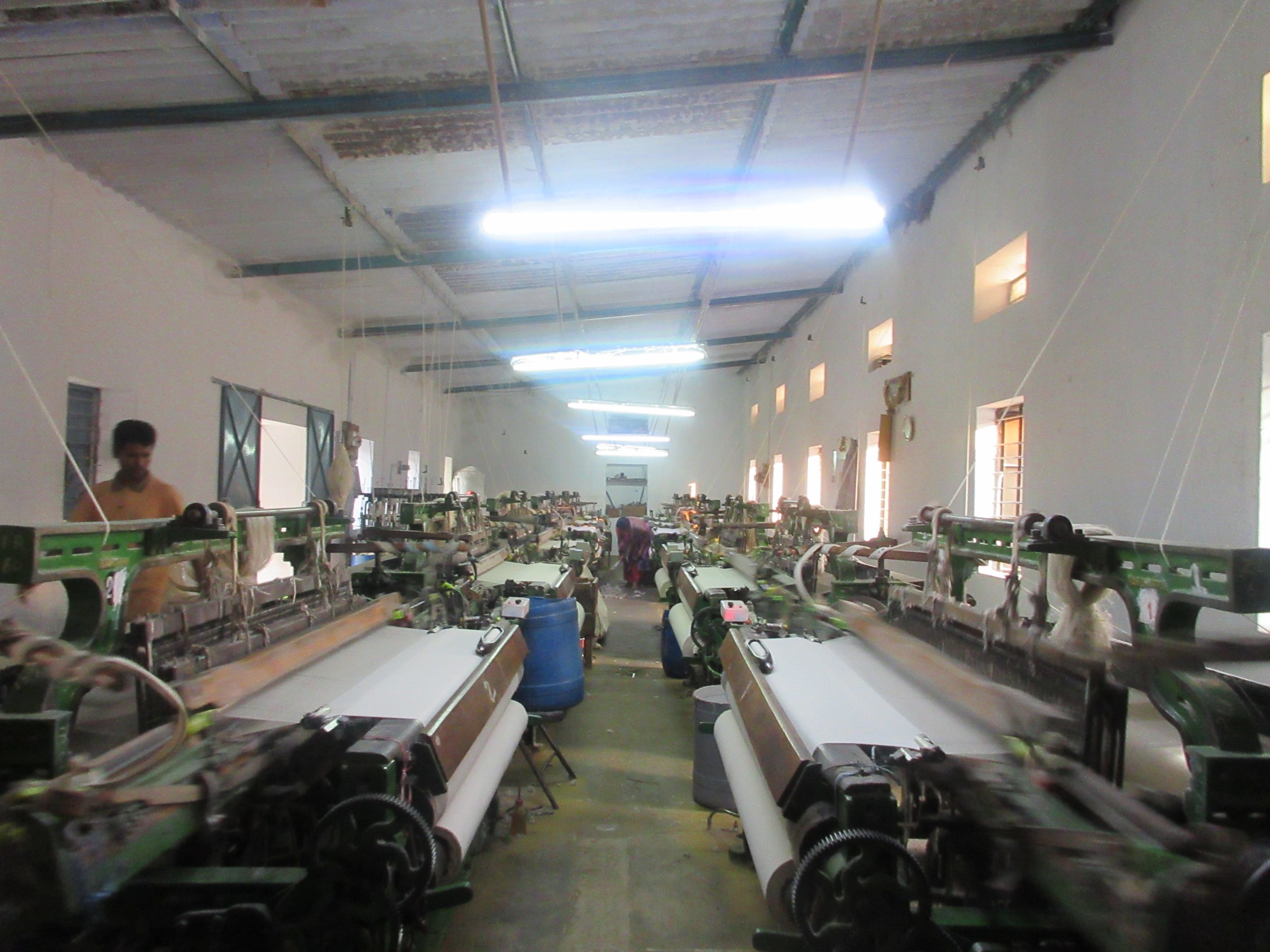
“These machines are generally operated by men because the belt is hard to adjust. This is not homebased work – it’s shifts in a factory. It’s predominantly men who work on machines, and the work in these factories for women is sweeping or clearing up. Only the workers are hired per shift, not the cleaners – they only have one hour a day of work. I prefer to do home based work because it’s more interesting for me, and there’s a more consistent income.”
